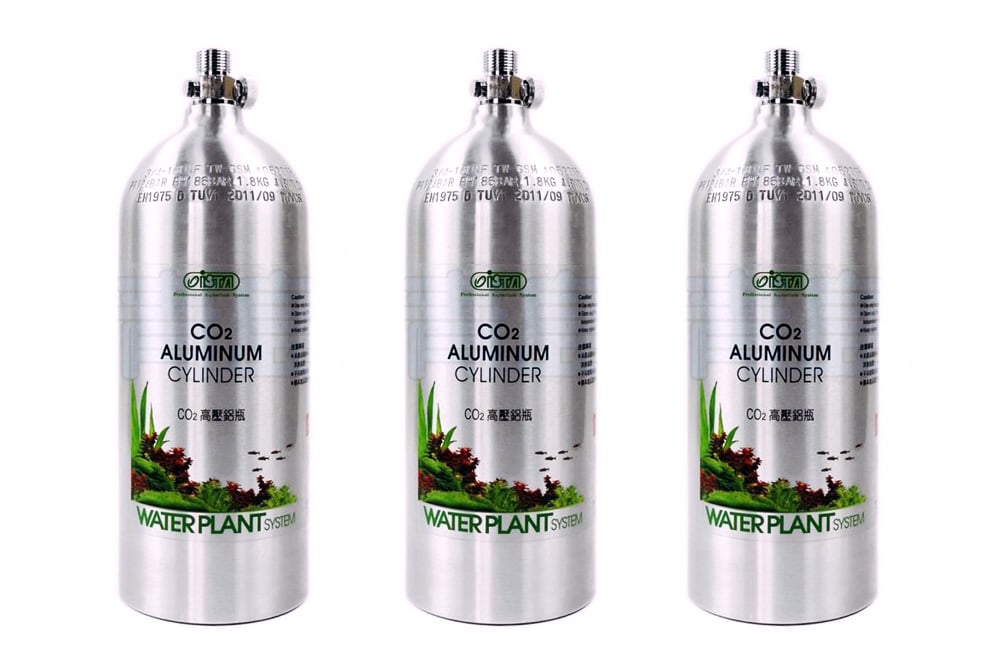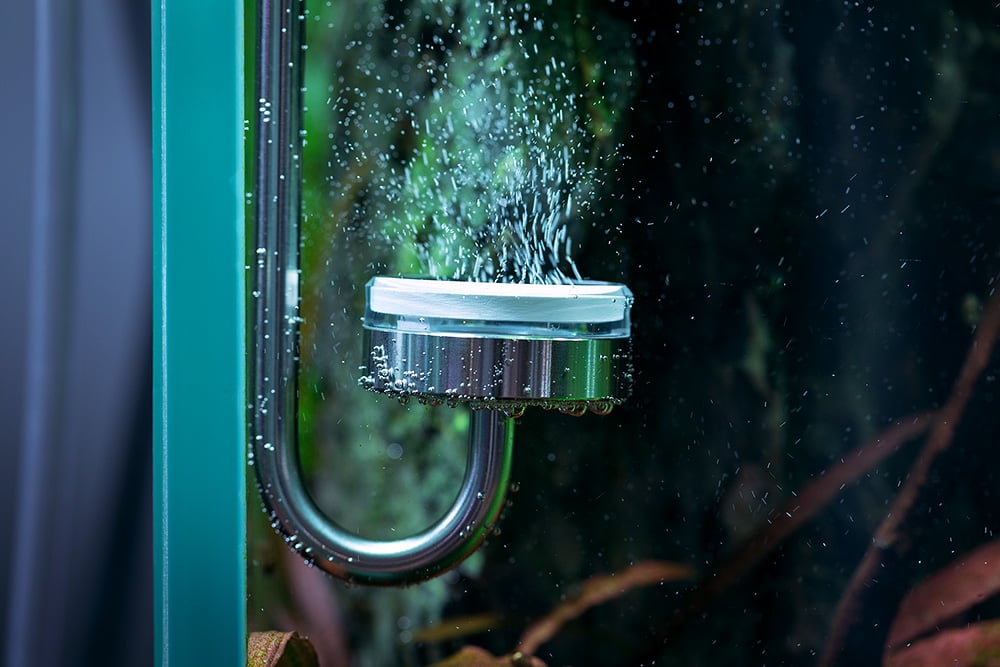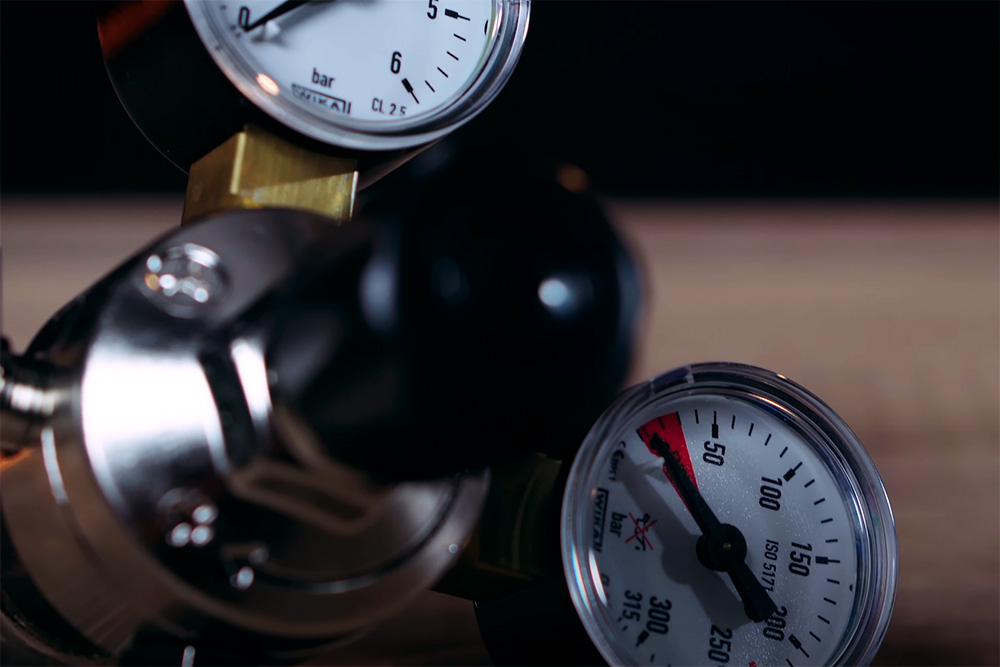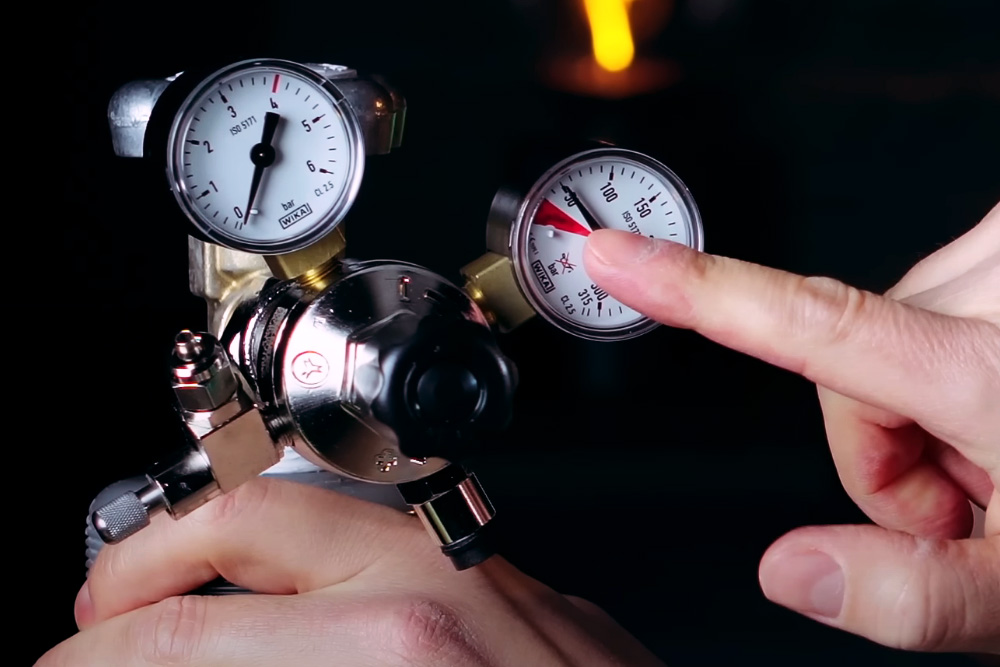How Long Does A Refillable CO2 Cylinder Last? The Answer Is Simple. Or Not…?
“How long does a refillable CO2 cylinder last?” is probably one of freshwater aquarium newcomers’ most frequently asked questions. That is a good reason to dedicate an article to this topic. As the headline suggests, no precise statement can be made since the actual CO2 consumption and the time the cylinder empties depend on several factors, which we will discuss in more detail. Nevertheless, based on empirical values, it is possible to make some indicative statements. These and further tips regarding CO2 consumption can be found here. If you also want to know more about the most common CO2 systems used in the aquarium hobby, our article “Aquarium CO2 System – which one should I choose?”.
What Factors Determine Over What Time Span A CO2 Filling Lasts
Don’t be confused or intimidated by the amount of influencing factors below. First and foremost, the knowledge should help you to use CO2 as effectively as possible. So that your CO2 fill lasts longer, and you can save money that way, too. The lifetime of a CO2 filling is related to the following:
CO2 Cylinder Size – The most common CO2 cylinders used in the aquarium hobby have a capacity of 500g, 2kg, 5kg, and 10kg for huge planted aquariums. The larger the CO2 cylinder and filling quantity, the longer it lasts. This statement does not contain any moving wisdom, but it is logical. The size makes a difference here and affects the time frame.
Aquarium Size – The more water an aquarium holds, the more CO2 must be fed into the aquarium to achieve a desired CO2 target value. Assume there is a 60-liter and a 120-liter aquarium, showing a steady CO2 value of 30 mg/l. Without further consideration, it may be taken that the 120-liter aquarium has the higher CO2 consumption of the two.
CO2 Addition Time – Regarding CO2 consumption, whether an aquarium is illuminated for twelve or only eight hours makes a considerable difference. At best, the CO2 supply should be coupled with the lighting time. We recommend starting the CO2 supply two hours before the lighting period starts. This approach ensures enough CO2 is dissolved in the water when the lights come on, and the plants immediately have the CO2 they need for photosynthesis. Further, the CO2 supply should end together with the lighting period.
CO2 Target Value – The CO2 value generally recommended for planted aquariums ranges between 20 mg/l and max. 30 mg/l. Assuming you want to reach 30 mg/l, more CO2 will be needed than if 20 mg/l is desired. The lifetime of a CO2 filling is, of course, also related to this value. We advise our customers to aim for 30 mg/l CO2 for heavily planted aquariums.
In addition to the factors already mentioned, there are others whose influence on CO2 consumption cannot be represented by a value. And yet they influence the end of the CO2 gas supply.
CO2 Bubbles Size – The tinier the CO2 bubbles emitted by the CO2 diffuser membrane, the more efficiently the CO2 can dissolve in the water.
CO2 Diffuser Type – There are different types of CO2 diffusers, which are either installed in the aquarium or integrated into the filter circuit of an external aquarium filter. Due to the extended residence period of CO2 bubbles in the water, CO2 inline diffusers and reactors in the filter circuit work more effectively than conventional CO2 diffusers.
CO2 Diffuser Positioning – The position of a CO2 diffuser in the aquarium influences the efficiency with which the CO2 bubbles dissolve in the water. If a CO2 diffuser is positioned in an area with low flow and quite close to the water surface, the emitted CO2 bubbles will quickly drift out of the water. That way, a large part of the CO2 will escape before it can dissolve. If the CO2 diffuser membrane is placed in an area with high flow and relatively close to the substrate, the CO2 bubbles will be swirled by the flow. As a result, the residence time of the CO2 bubbles is extended, which results in more dissolved CO2 and is also more economical.
pH Controller – If a pH controller is used in the aquarium, then this also influences CO2 consumption because the pH value can be controlled through CO2 addition or reduction.
After all, we’ve explained so far, you might be thinking, “Great, now I’m a little smarter, but I still don’t know how long the CO2 in my bottle will last.” Don’t worry. We’ll now give you recommendations and tips to help you with this question.
CO2 Consumption Empirical Values
First, it makes sense to go by the experience and tips of others until you have gained your own experience with CO2 supply and consumption in your own planted aquarium. The wealth of information available online makes it relatively easy to get CO2 consumption values from other aquarium hobbyists all around the globe. With such values, you can quickly get a feel for the approximate CO2 consumption of your aquarium and estimate how long your CO2 cylinder will last.
Example for CO2 supply duration, which we usually use as a basis for customer advice:
| Aquarium size | CO2 cylinder | CO2 target value | CO2 addition time | Approx. CO2 supply duration |
| 64 L (60P) | 2 Ltr | 30 mg/l | 10 h | 4 – 6 month |
Since no aquarium is the same as another and the experience values of others are therefore not transferable 1 to 1, such information should only serve as a starting point or guide. Often such values are very close to the actual values of your aquarium, but your own empirical values are still unbeatable. It is important to remember that if just one of the units of measurement changes in value, this will have a direct and sometimes significant impact on the expected CO2 supply duration of the cylinder. Here are a few simple examples:
| Aquarium size | CO2 cylinder | CO2 target value | CO2 addition time | Approx. CO2 supply duration |
| 64 L (60P) | 0.5 Ltr | 30 mg/l | 10 h | 1 – 1.5 month |
| 64 L (60P) | 5 Ltr | 30 mg/l | 10 h | 7 – 10 month |
| 64 L (60P) | 2 Ltr | 30 mg/l | 8 h | 4 – 6 month |
| 64 L (60P) | 2 Ltr | 20 mg/l | 10 h | 4 – 6 month |
| 128 L | 2 Ltr | 30 mg/l | 10 h | 2- 3 month |
Values changed compared to the first table are highlighted in bold letters.
CO2 Bubble Counter – Suitable Measuring Tool for This Purpose…Yes Or No?
We are asked this question from time to time and answer it with a clear no. A CO2 bubble counter is a tool designed to make setting the desired CO2 level easier via the needle valve on the CO2 regulator. Furthermore, the bubble size of such bubble counters is not standardized and can vary depending on the product. On statements like, “At 60 bubbles per minute, your 2kg CO2 cylinder will last for X months”, you should not give anything. Because CO2 bubble counters are simply not made and intended for this purpose.
Further Tips
We have listed many reasons why predicting the actual empty state of a CO2 cylinder is challenging. Now it’s time to look at some tips regarding CO2 supply that can be helpful in everyday life.
TIP 1 – The high-pressure indicator, one of the two pressure gauges of a CO2 regulator, indicates that the CO2 cylinder will soon be empty. When the CO2 cylinder is nearly empty, the needle in the display will drop significantly, and the CO2 will soon be depleted. If you detect the “needle drop” immediately, you have approximately two weeks until the cylinder is empty. It is, therefore, worthwhile to check the display of the CO2 regulator regularly after a few weeks or months – depending on the size of the cylinder – e.g., during weekly water changes.
TIP 2 – Keeping a spare CO2 cylinder to react quickly to an empty cylinder is definitely a good thing. Thus, the CO2 supply can be continued without much interruption, and the nutrient level in the aquarium is kept in balance. Another advantage is that the empty CO2 cylinder can be filled and prepared for subsequent use without time pressure and haste.
TIP 3 – For nano aquariums or those where the nearest aquarium dealer is far away, using a CO2 system that is Soda Stream CO2 cylinder compatible can be an excellent solution. The German company Dennerle offers such a system with its Dennerle Carbo Soda M200. The CO2 regulator of the Carbo Soda M200 can be used with commercially available Soda Stream CO2 cylinders, which are part of the standard range in many supermarkets. You then pick up a filled CO2 cylinder at the supermarket counter the next time you go grocery shopping. Very practical!




